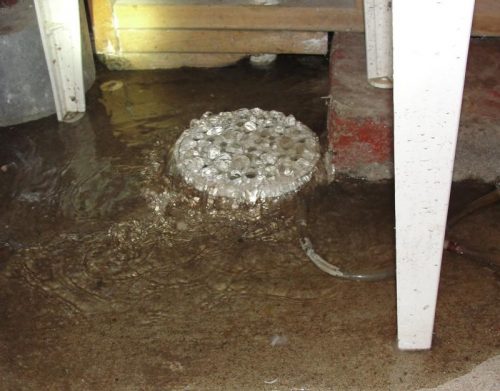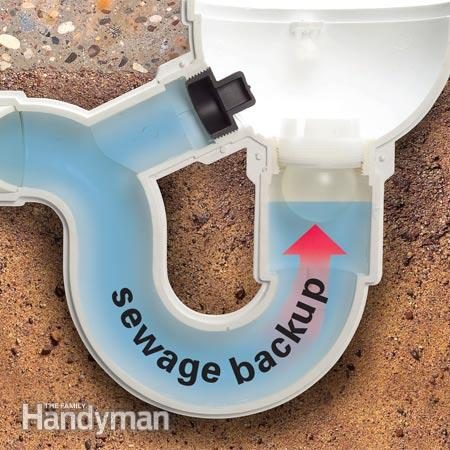
A backed up floor drain can be mystifying. I wrote a blog post explaining the basics of floor drains over eight years ago, and I’ve received more comments on that post than any other. The majority of those comments were from people trying to understand why water was backing up out of their floor drain.
If water backs up out of your floor drain, it’s not a floor drain problem.
No joke. When water backs up out of a floor drain, it usually means there is a clog in the drain line, not the floor drain itself. When there is a clog in the main building drain and water is run down a drain from an upper fixture, water will back up in the drain line until it finds somewhere else to come out. That’ll be the lowest fixture. In most homes, the lowest fixture is the floor drain.
If a home doesn’t have a floor drain, water will still back up out of the lowest fixture. That might be a basement shower, bathtub, standpipe, or a sink. I’ve seen all of these happen, and you can too by clicking on the video compilation below.
In all of these cases, there was no problem with the fixture that was backing up. The problem exists with a drain line downstream from the fixture. The best way to clear a clogged drain is to have the drain line cleaned out professionally. If you choose to try it yourself, be warned: this is very dirty work. Once you find the clog, whatever you pull out of your drain is going to be gross. Really gross. That’s part of the reason that most people hire out this work.
For many homeowners with old homes, it’s standard practice to have a drain cleaning service come out to auger the drain lines every year. This helps to clear trees roots out of the drain line and is done as preventative maintenance.
What else causes a backup?
In some cases, sewage can back up into a home due to problems with the city sewer. There’s not much that can be done to guard against that, short of using a backwater valve at your floor drain. Some floor drains have backwater devices built in, such as the one shown below, but this is not a plumbing code requirement.

The idea is that the little ball is supposed to rise up and prevent sewage from coming into the home. They work well when they’re new, but I’ve seen water back up past these backwater valves many times once they’ve gotten old and slimy. They’re better than nothing, but they’re certainly not a failsafe. The Family Handyman has a nice write-up on their website showing how to add a backwater valve to an existing floor drain: https://www.familyhandyman.com/plumbing/drain-repair/modify-a-floor-drain-to-prevent-flooding/view-all/.

